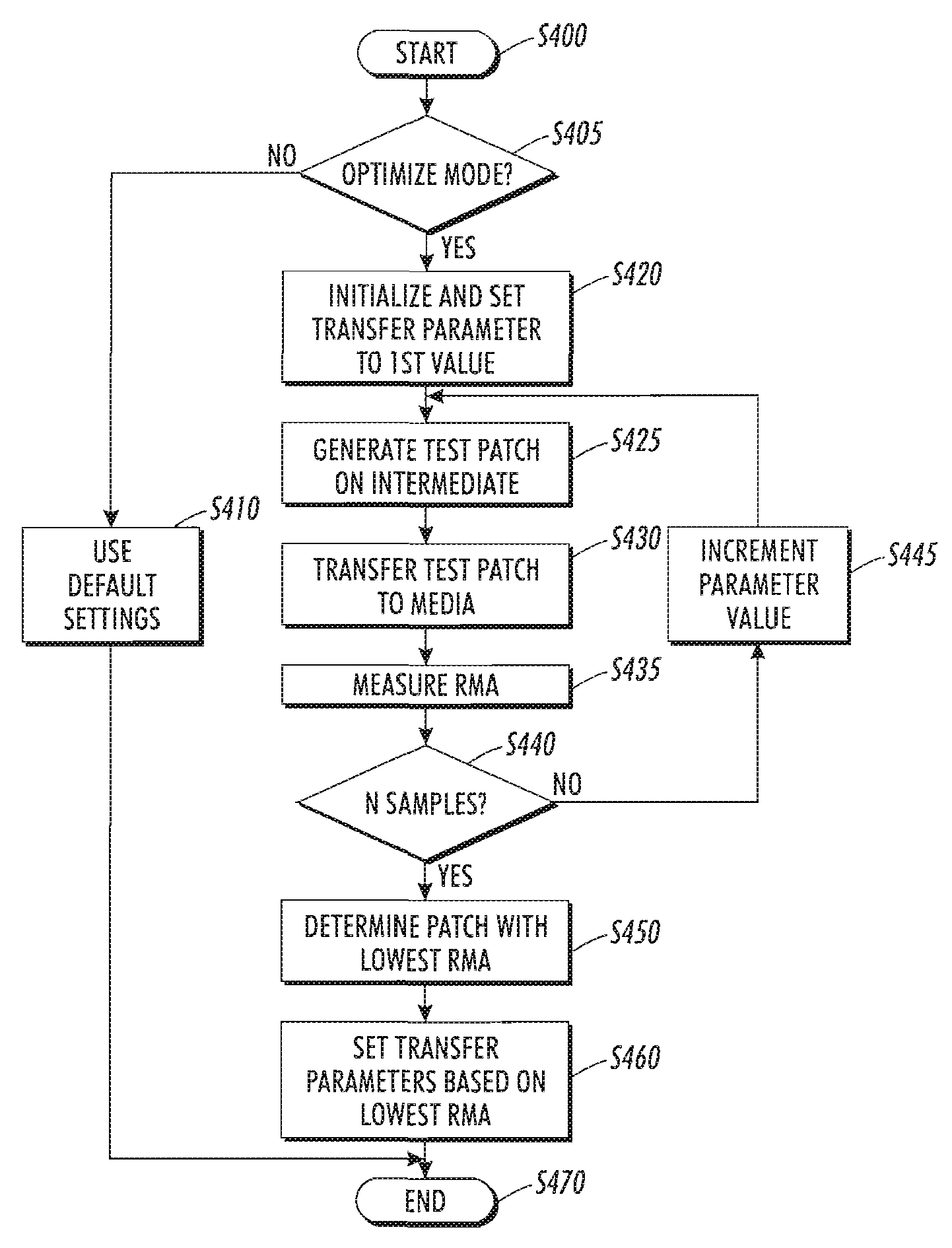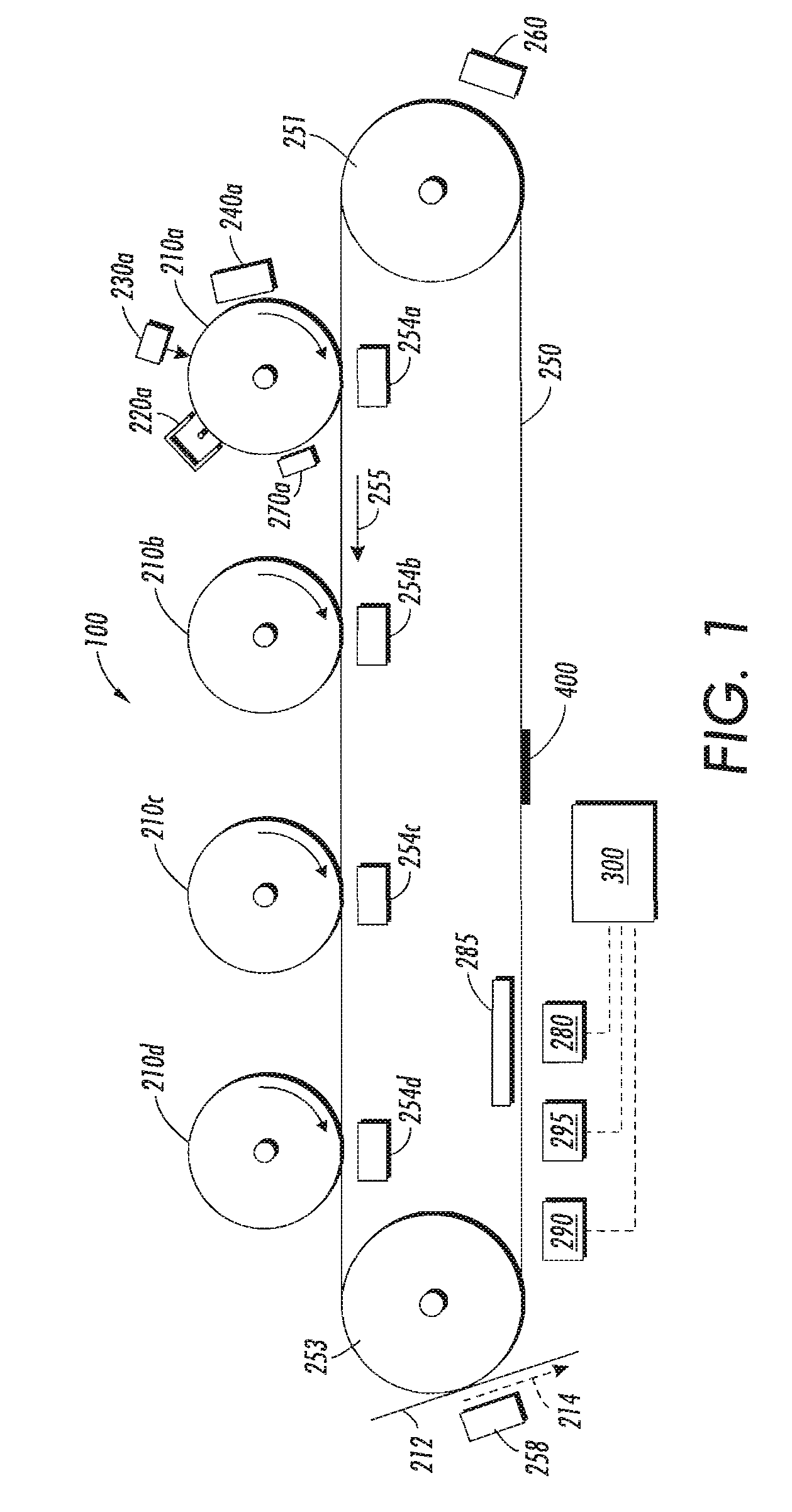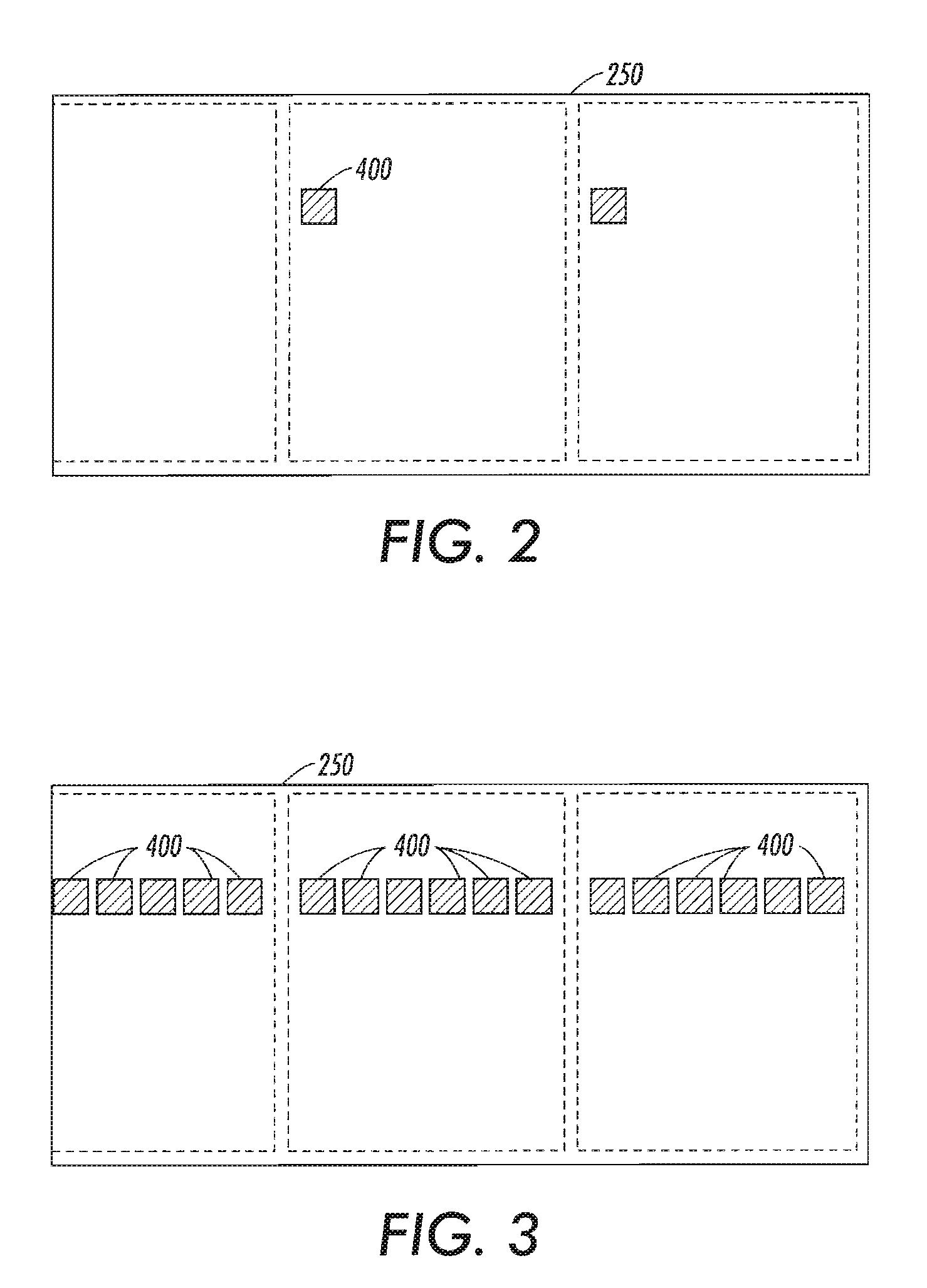Method and apparatus for optimization of second transfer parameters
a technology of transfer parameters and optimization methods, applied in electrographic process apparatus, instruments, optics, etc., can solve the problems of inability to adapt to new media types or environments, inability to optimize the transfer efficiency, and inability to adjust to paper type and environment, etc., to achieve the effect of optimizing the transfer efficiency, increasing the need for efficiency, and high copy quality
- Summary
- Abstract
- Description
- Claims
- Application Information
AI Technical Summary
Benefits of technology
Problems solved by technology
Method used
Image
Examples
Embodiment Construction
[0023]Many modern multi-color image firming devices build up an image on an intermediate transfer member and then transfer the color image in one step to a media substrate, such as paper. Such image forming devices include, for example, photocopiers, laser printers, facsimile machines and the like. Examples of these include U.S. Pat. Nos. 4,791,452; 4,998,139; and 4,833,503, the disclosures of which are incorporated herein by reference in their entireties.
[0024]These image forming devices employ an imaging member such as a photoreceptor that is electrostatically charged, and then exposed to a light image corresponding to an image to be printed so that the imaging member is selectively discharged in accordance with the image. Thus, exposure of the imaging member records an electrostatic (latent) image on it corresponding to the informational areas contained within the image to be printed. This latent image is developed by bringing a developer material (liquid or powder) into contact ...
PUM
 Login to View More
Login to View More Abstract
Description
Claims
Application Information
 Login to View More
Login to View More - R&D
- Intellectual Property
- Life Sciences
- Materials
- Tech Scout
- Unparalleled Data Quality
- Higher Quality Content
- 60% Fewer Hallucinations
Browse by: Latest US Patents, China's latest patents, Technical Efficacy Thesaurus, Application Domain, Technology Topic, Popular Technical Reports.
© 2025 PatSnap. All rights reserved.Legal|Privacy policy|Modern Slavery Act Transparency Statement|Sitemap|About US| Contact US: help@patsnap.com



